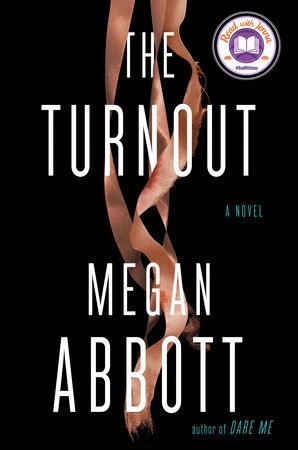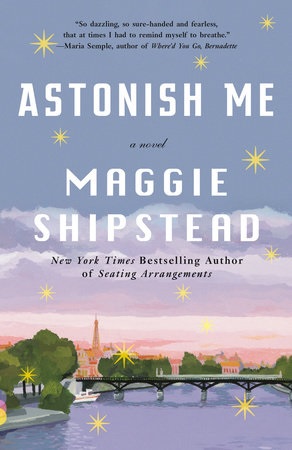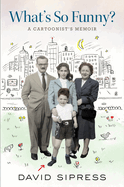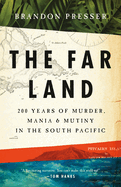_Lyndal_Stewart.jpg) |
| photo: Lyndal Stewart |
Oliver Milman is a British journalist and environment reporter at the Guardian who lives in New York City. His debut book, The Insect Crisis: The Fall of the Tiny Empires that Run the World (W.W. Norton, reviewed below), is an account of the environmental threat created by the plummeting insect population. He recently spoke with Shelf Awareness about his experiences writing his first book, why he felt called to write about this topic now, and his own literary inspirations.
Congratulations on your first book! Coming from a background of journalism, did you learn anything new about yourself as a writer while working in this longer format?
Thank you! Yes, I think I did, not least that I have a profound respect for authors, both fiction and nonfiction alike. Reporting out a punchy news piece, or even a longer narrative feature, is a very different beast to writing a complete book and the sheer endurance required was something I realized is rarely, if ever, demanded of me.
Maintaining the reader's interest while building out a set of facts and cogent arguments is important to both formats, I just had to work a lot harder to keep the whole thing coherent when writing the book. I've never written so many words for one piece of work. The fact checking alone was gargantuan.
What were some of the rewarding, and some of the challenging, parts about working on a full-length book?
As mentioned, taking on the scale of writing a book was an adjustment I had to make, but in many ways, it was a fun process. Journalism usually requires you to omit interesting elements because of the pressures of time, space and focus, but with this book I was able to fully explore the topic and allow the component stories the proper room to breathe.
The research was laborious, but it was also fascinating--insects are incredible creatures, and I don't think you could ever run out of engrossing or bizarre things to find out about them. The people who study insects, too, are a great bunch to be around, often erudite, eccentric and fiercely opinionated. I wandered around in their world for a couple of years and had my eyes opened to a lot of things we take for granted.
A challenging aspect of the writing was simply the era we currently find ourselves in. If you could construct the polar opposite to a Zen writing retreat, my circumstances would be close to that--working on a book along with a full-time job in a small apartment containing two raucous young children and a neurotic dog, amid a pandemic. Somehow it all got done.
In your work as environment reporter for the Guardian, you've covered many ecological issues. What inspired you to devote a full-length book to the plight of insects? And why now?
If I were to guess what my first book would be about prior to this experience, I don't think I would've thought of insects. I've reported from places ranging from the Great Barrier Reef to the Alaskan Arctic; I've even clambered into a tiny submarine to get up close to an underwater volcano in Bermuda. Climate change is the dominant focus of my reporting, so perhaps something on that would've been the most logical extension.
But it became clear to me, through a few scientists getting increasingly agitated about the issue, that the decline of insects was becoming the silent yet existential crisis of our times. There was a huge flurry of research that came out around 2017 and 2018 that showed these jaw-dropping losses in insect numbers, with more recent studies only showing more horrors. I could see that no one had really tackled this topic before--there are plenty of books on how great insects are, but none on how they are in trouble. I felt this was the right time to raise the alarm.
 In your book, you mention that "three out of every four known animal species on Earth are insects and yet, within their massed ranks, only butterflies are considered with anything close to affection." Have you always had an appreciation for insects?
In your book, you mention that "three out of every four known animal species on Earth are insects and yet, within their massed ranks, only butterflies are considered with anything close to affection." Have you always had an appreciation for insects?
Insects essentially hold aloft life on Earth and yet we tend to view them as either irritating or largely irrelevant. I have always had an interest in nature, I used to turn over logs to look at earwigs and ants as a child and kept a few beetles for a while. I have admired them even when they've been an annoyance--a few summers ago an army of ants marched through my apartment and nothing I did could stem their numbers.
Their organization, resilience and adaptability are incredible. It's just a catastrophic shame that we are pushing them beyond their bounds of tolerance.
What is one of the most surprising facts you discovered while researching this book?
So many facts it's hard to pick just one! I learned that bees could count and understand the concept of zero. They can also be taught to play football. A type of butterfly has an eye on its genitals. Another type of butterfly can somehow navigate and fly from Canada to central Mexico and survive. Cockroaches can survive for two weeks after being beheaded. Insects have been around since before the dinosaurs and will almost certainly be around, in some form, after humanity has departed this planet.
You feature many scientists and studies in this book. How long did it take to compile all of this information?
Research, interviews and travel spanned around a year. I had hundreds of pages of interviews with dozens of scientists, it was a big job to condense the best bits down into the chapters. I was fortunate, however, that I was able to do much of the travel prior to the pandemic hitting.
The Insect Crisis will be a great resource and call-to-action for our generation and for those to come. It is certain to inspire more work on the topic. What are some of the books about nature and conservation that have inspired you and will always have a treasured spot on your bookshelf?
I will always treasure classic environmental texts such as Silent Spring by Rachel Carson, The Diversity of Life by E.O. Wilson and Arctic Dreams by Barry Lopez but the breadth and ambition of nature writing has undoubtedly exploded in recent years.
I've always enjoyed Robert Macfarlane's writing, but Underland was just masterful; Under a White Sky by Elizabeth Kolbert is excellent; and the growing range of "cli-fi" books are rich with great writing--I'd say A Children's Bible by Lydia Millet is a highlight of the genre. --Grace Rajendran, freelance reviewer and literary events producer
Oliver Milman: Creating a Buzz About Insects
 Ballet has always been an artform that demands perfection--every step on the stage of a ballet carefully choreographed and rehearsed, again and again, until impossible movements can be delivered with a kind of grace that make them feel not only fluid, but natural. This grueling repetition--and the demands on those who yearn for a professional career as a dancer--is the central turning point of Rachel Kapelke-Dale's debut novel, The Ballerinas (St. Martin's, $27.99). Here, Kapelke-Dale draws on her own intense experience for a fictional story of three young dancers at the Paris Opera Ballet, one of the most prestigious dance schools and companies in the world.
Ballet has always been an artform that demands perfection--every step on the stage of a ballet carefully choreographed and rehearsed, again and again, until impossible movements can be delivered with a kind of grace that make them feel not only fluid, but natural. This grueling repetition--and the demands on those who yearn for a professional career as a dancer--is the central turning point of Rachel Kapelke-Dale's debut novel, The Ballerinas (St. Martin's, $27.99). Here, Kapelke-Dale draws on her own intense experience for a fictional story of three young dancers at the Paris Opera Ballet, one of the most prestigious dance schools and companies in the world. Much of The Ballerinas centers on the sacrifice the art of ballet requires of its dancers, and how it spills out of the studio and into the lives of these women; "taking our strength and making it pliable, supple, compliant." Megan Abbott explores similar questions of grace, power and womanhood on a much more local stage in The Turnout (Putnam, $27), moving from Kapelke-Dale's Parisian setting to a much smaller--yet just as rigid--American family-run ballet school in the kind of suspense novel we've come to expect from Abbott (You Will Know Me; Give Me Your Hand).
Much of The Ballerinas centers on the sacrifice the art of ballet requires of its dancers, and how it spills out of the studio and into the lives of these women; "taking our strength and making it pliable, supple, compliant." Megan Abbott explores similar questions of grace, power and womanhood on a much more local stage in The Turnout (Putnam, $27), moving from Kapelke-Dale's Parisian setting to a much smaller--yet just as rigid--American family-run ballet school in the kind of suspense novel we've come to expect from Abbott (You Will Know Me; Give Me Your Hand). Maggie Shipstead's Astonish Me (Vintage, $16) bridges these two locales in her story of a woman in California drawn slowly back into her past as a once-aspiring ballerina in Paris. What unfolds as the novel moves back and forth in time is a tale of coupling and uncoupling, one rife with themes similar to both The Ballerinas and The Turnout: What does it take to pursue a passion, and what happens when no sacrifice proves enough for an artform that requires nothing short of impossible perfection? --Kerry McHugh, freelance writer
Maggie Shipstead's Astonish Me (Vintage, $16) bridges these two locales in her story of a woman in California drawn slowly back into her past as a once-aspiring ballerina in Paris. What unfolds as the novel moves back and forth in time is a tale of coupling and uncoupling, one rife with themes similar to both The Ballerinas and The Turnout: What does it take to pursue a passion, and what happens when no sacrifice proves enough for an artform that requires nothing short of impossible perfection? --Kerry McHugh, freelance writer


_Lyndal_Stewart.jpg)
 In your book, you mention that "three out of every four known animal species on Earth are insects and yet, within their massed ranks, only butterflies are considered with anything close to affection." Have you always had an appreciation for insects?
In your book, you mention that "three out of every four known animal species on Earth are insects and yet, within their massed ranks, only butterflies are considered with anything close to affection." Have you always had an appreciation for insects? On Friday, March 18, Hulu will release a film adaptation of Patricia Highsmith's 1957 novel Deep Water, starring Ben Affleck and Ana de Armas as married couple Vic and Melinda Van Allen. The Van Allen marriage is loveless, and Melinda is allowed to pursue outside relationships in lieu of divorce. One of those past lovers was the victim of an unsolved murder. Vic jokingly takes credit for the crime, but his mounting jealousy soon leads to real killings. Melinda starts to suspect the worst and investigates Vic with the help of a local writer. The film also stars Tracy Letts, Rachel Blanchard, Lil Rel Howery, Kristen Connolly, Dash Mihok and Finn Wittrock. Deep Water is directed by Adrian Lyne (Flashdance, 9½ Weeks, Fatal Attraction, Jacob's Ladder and Indecent Proposal), his first film since Unfaithful in 2002.
On Friday, March 18, Hulu will release a film adaptation of Patricia Highsmith's 1957 novel Deep Water, starring Ben Affleck and Ana de Armas as married couple Vic and Melinda Van Allen. The Van Allen marriage is loveless, and Melinda is allowed to pursue outside relationships in lieu of divorce. One of those past lovers was the victim of an unsolved murder. Vic jokingly takes credit for the crime, but his mounting jealousy soon leads to real killings. Melinda starts to suspect the worst and investigates Vic with the help of a local writer. The film also stars Tracy Letts, Rachel Blanchard, Lil Rel Howery, Kristen Connolly, Dash Mihok and Finn Wittrock. Deep Water is directed by Adrian Lyne (Flashdance, 9½ Weeks, Fatal Attraction, Jacob's Ladder and Indecent Proposal), his first film since Unfaithful in 2002.










